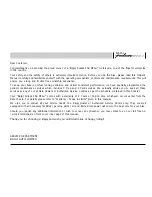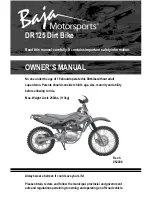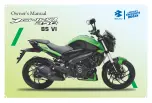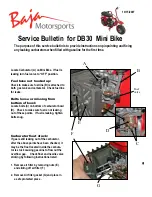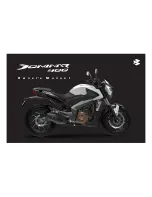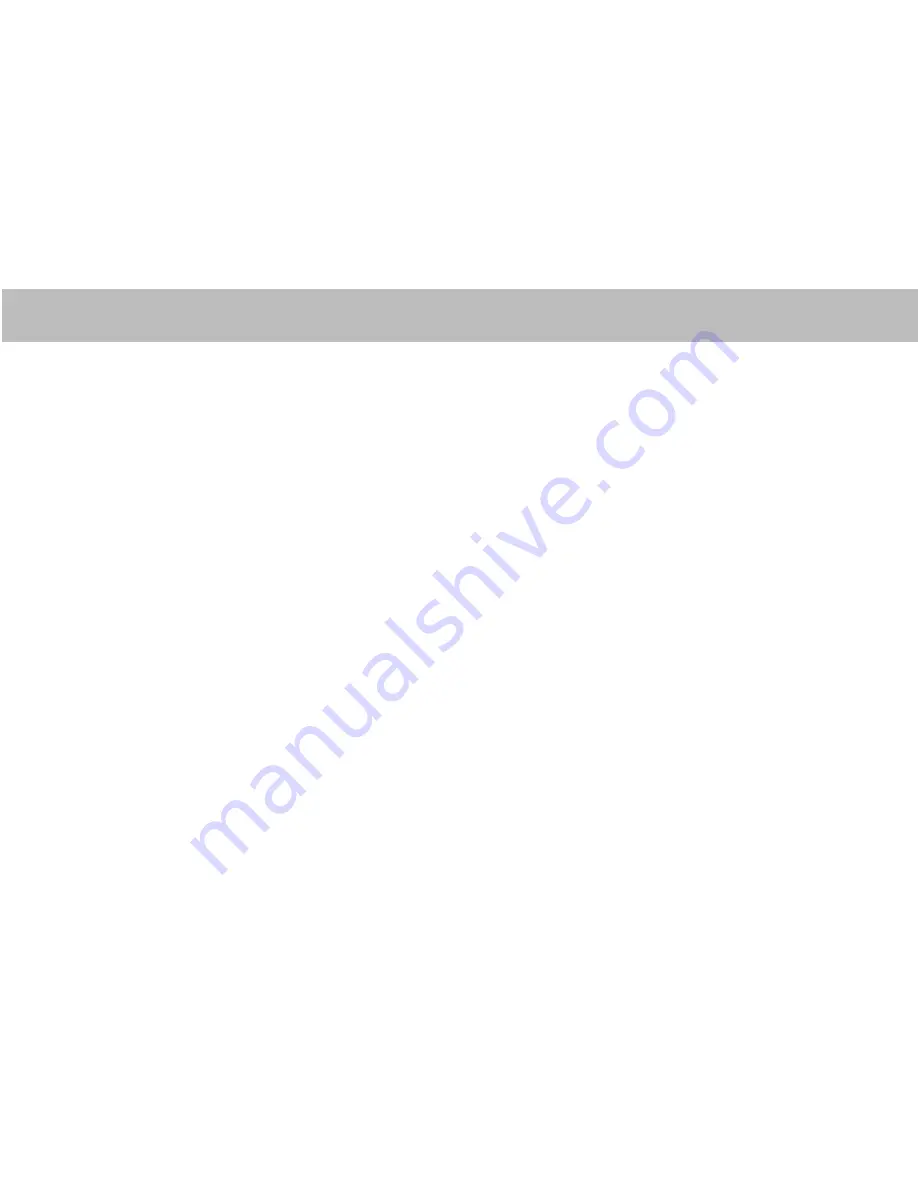
For your convenience, this DIRT BIKE comes with an ignition switch and key. Remove the key when the motorcycle is parked to help prevent unauthorized use.
Your Dirt Bike was designed as a rider-only motorcycle. It was not designed to carry a passenger or cargo. A passenger or cargo could interfere with your ability to move
around to maintain your balance and control of the motorcycle.
In addition, exceeding the weight limits or carrying an unbalanced load can seriously affect your motorcycle's handling, braking, and stability. Adding accessories or
making modifications that change this motorcycle's design and performance can also make it unsafe. Also, the weight of any accessories will reduce the maximum load
the motorcycle can carry.
LOAD LIMITS
Following are the load limits for your motorcycle:
Maximum weight capacity = 50 KG’s
Includes the weight of the rider and any accessories.
CHECK ALL LOOSE PARTS
- Check and secure all nuts and bolts BEFORE EVERY RIDE. Make sure the handle bars and their clamp are tight to unsure no movement
and are locked into place. There should be no unusual shakes or noises associated with loose or broken parts. If you are unsure, get advised by an experienced small
engine mechanic or hobby shop technician.
BRAKE CHECK
- Check the brakes for correct functioning. When you apply pressure to the hand brake you should have a positive braking action. If not adjust the brake
accordingly. When you apply the brake with the accelerator on the brake cut-off switch will stop the motor.
FRAME, FORK AND HANDLEBARS
- Check for cracks in the frame or broken connections. A broken frame is very rare but in some cases when aggressive riders run into
a gutter can break a frame. Make sure the check is done regularly.
TYRE INFLATION
- Check the tyres for excessive wear and always check the pressure and re-inflate if required. If you get a flat tyre you will need to replace the inner tube
and are available to purchase from GMX
SAFETY GEAR
- Always wear a motorbike Australian standard helmet and protective gear such as elbow pads, knee pads, gloves and enclosed shoes. Never ride barefoot
or in thongs.
THROTTLE
- Check the free play and adjust if needed. Rotate the throttle to make sure it moves smoothly without sticking, and snaps shut automatically when it is
released, in all steering positions.
BRAKES
- Squeeze the front brake lever and step on the rear brake pedal to check that the controls operate normally. Adjust free play, if necessary.
MAINTENANCE SAFETY
The maintenance section includes instructions on how to perform some important maintenance tasks. Some of the most important safety precautions
follow. However, we cannot warn you of every conceivable hazard that can arise in performing maintenance. Only you can decide whether or not you
should perform a given task.
Read the instructions, before you begin, and make sure you have the tools and skills required.
To help prevent the motorcycle from falling over, park it on a firm, level surface, using the side stand or a maintenance stand to provide support.
To reduce the possibility of a fire or explosion, be careful when working around gasoline. Use only a non-flammable (high flash point) solvent such as
kerosene—not gasoline— to clean parts. Keep cigarettes, sparks, and flames away from all fuel- related parts.
IMPORTANT SAFETY PRECAUTIONS
Make sure the engine is off before you begin any maintenance or repairs.
This will help eliminate several potential hazards:
- Carbon monoxide poisoning from engine exhaust. Be sure there is adequate ventilation whenever you operate the engine.
- Burns from hot motorcycle parts. Let the engine and exhaust system cool before touching
- Injury from moving parts. Do not run the engine unless instructed to do so.















